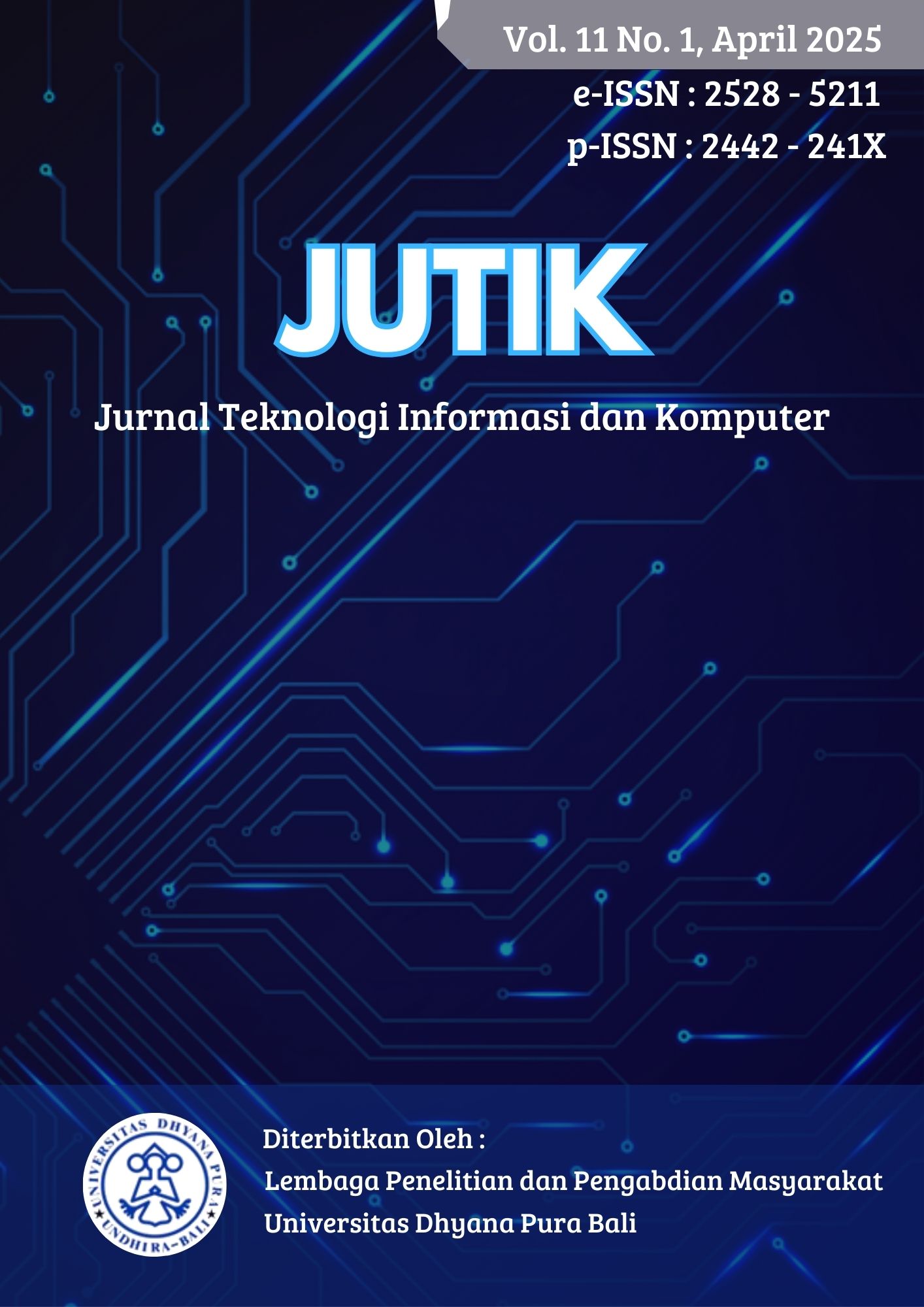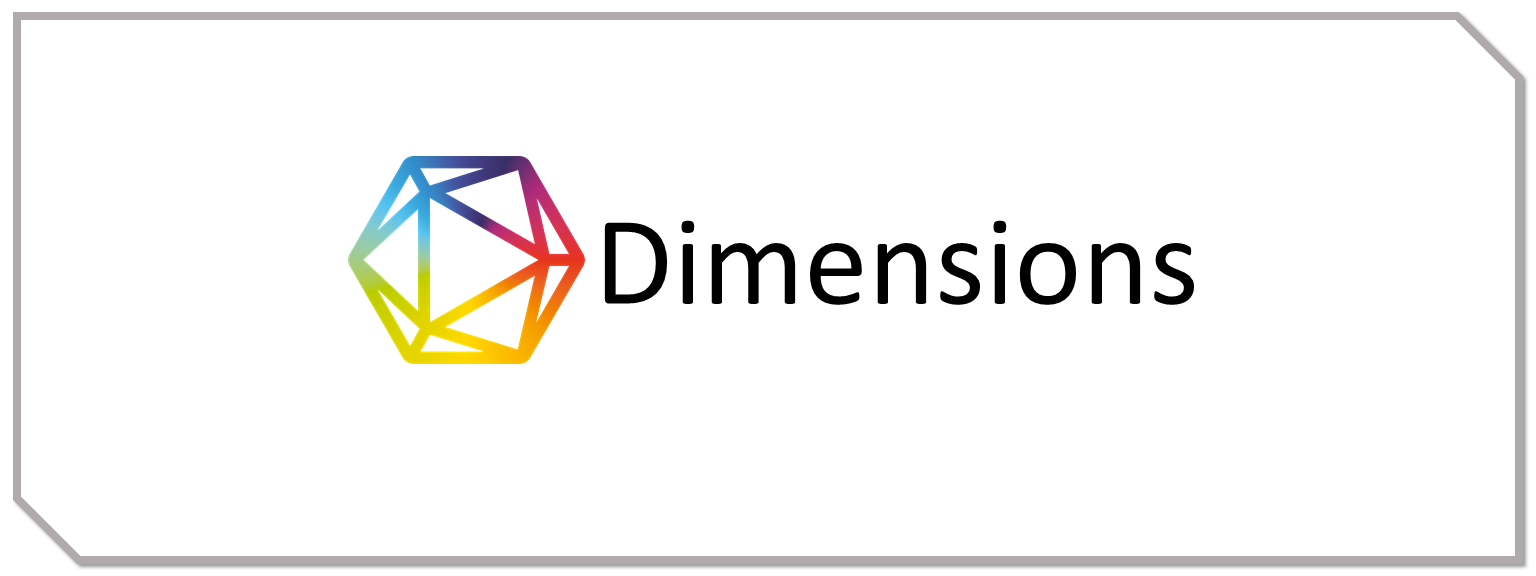SEGMENTASI PENDENGAR MUSIK BERDASARKAN KEBIASAAN DAN DAMPAKNYA TERHADAP KESEHATAN MENTAL MENGGUNAKAN K-MEANS DAN RANDOM FOREST
DOI:
https://doi.org/10.36002/jutik.v11i1.3748Keywords:
Clustering, K-Means, Mental Health, Music, Random ForestAbstract
Music plays a crucial role in human life, not only as a form of entertainment but also as a tool for managing emotions and mental health. This study aims to analyze the relationship between music listening habits and individuals' psychological conditions, as well as to identify the key factors influencing the effects of music on mental health. The methods used in this research include K-Means Clustering to group music listeners based on their habits and mental states, and Random Forest to determine the dominant factors affecting their music experience. The findings reveal that music listeners can be categorized into four main clusters, with anxiety and insomnia emerging as the most dominant factors influencing music effects. The Silhouette Score of 0.24 indicates a moderately effective clustering performance, though there is room for improvement. The evaluation of the Random Forest model shows the highest accuracy at 86% in Cluster 3, while Cluster 0 records the lowest accuracy at 55%, suggesting variations in pattern recognition across clusters. This study concludes that music impacts each group of listeners differently, depending on their psychological characteristics. These findings can serve as the foundation for developing personalized music recommendation systems based on mental health conditions, as well as advancing music therapy for individuals with high levels of anxiety or sleep disorders.
References
I. Syaefudin, “Pengaruh Psikologis Musik Gambus Di Kampung Arab Surabaya,†Repertoar Journal, vol. 3, no. 2, pp. 195–217, Feb. 2023, doi: 10.26740/rj.v3n2.p195-217.
Lussy Putri Khadijah, “Efektivitas Terapi Musik Untuk Menurunkan Tingkat Stres Dan Kecemasan,†Detector: Jurnal Inovasi Riset Ilmu Kesehatan, vol. 1, no. 3, pp. 91–98, Jul. 2023, doi: 10.55606/detector.v1i3.2101.
A. N. Najla, “Dampak Mendengarkan Musik Terhadap Kondisi Psikologis Remaja,†Jurnal Edukasi, vol. 1, no. 1, Dec. 2020, doi: 10.31234/osf.io/fwujn.
M. Malikah, “Dinamika Pengaruh Musik pada Kesejahteraan Psikologis Peserta Didik: Analisis Literatur tentang Respons Neurologis dan Emosional,†Journal of Education Research, vol. 5, no. 4, pp. 5109–5118, Oct. 2024, doi: 10.37985/jer.v5i4.1751.
H. A. Modran, T. Chamunorwa, D. Ursuțiu, C. Samoilă, and H. Hedeșiu, “Using Deep Learning to Recognize Therapeutic Effects of Music Based on Emotions,†Sensors, vol. 23, no. 2, p. 986, Jan. 2023, doi: 10.3390/s23020986.
M. Ahmed, R. Seraj, and S. M. S. Islam, “The k-means Algorithm: A Comprehensive Survey and Performance Evaluation,†Electronics (Basel), vol. 9, no. 8, p. 1295, Aug. 2020, doi: 10.3390/electronics9081295.
D. B. Rarasati, “A Grouping of Song-Lyric Themes Using K-Means Clustering,†JISA(Jurnal Informatika dan Sains), vol. 3, no. 2, Dec. 2020, doi: 10.31326/jisa.v3i2.658.
B. Hakim, F. J. Kaunang, C. Susanto, J. Salim, and R. Indradjaja, “Implementasi Machine Learning Dalam Pengelompokan Musik Menggunakan Algoritma K-Means Clustering,†IDEALIS : InDonEsiA journaL Information System, vol. 8, no. 1, pp. 74–83, Jan. 2025, doi: 10.36080/idealis.v8i1.3357.
Y. Xiao, Z. He, H. Liao, K. Huang, J. Zhao, and Y. Wu, “Music genre influence and artist similarity based on data analysis,†J Phys Conf Ser, vol. 1903, no. 1, p. 012007, Apr. 2021, doi: 10.1088/1742-6596/1903/1/012007.
D. Muriyatmoko, A. Musthafa, M. Fa-Idzaa, U. Darussalam Gontor, and J. Timur Indonesia, “Seminar Nasional Amikom Surakarta (Semnasa) 2024 Perbandingan Metode Support Vector Machine Dan Random Forest Dalam Menganalisis Pengaruh Musik Terhadap Penurunan Tingkat Stress Mahasiswi Semester 7 Saat Skripsi (Studi Kasus : Universitas Darussalam Gontor),†Seminar Nasional Amikom Surakarta (Semnasa) 2024, vol. 2, no. 1, pp. 128–135, Nov. 2024, Accessed: Mar. 23, 2025. [Online]. Available: https://ojs.amikomsolo.ac.id/index.php/semnasa/issue/view/2
Nauval Satriani Siregar, “EDA & Data Preprocessing in R,†https://rpubs.com/Satria_Siregar/743806.
J. Ipmawati and I. Unggara, “Analisis Status Gizi Anak Menggunakan Metode Klastering pada Dataset Anthropometri,†bit-Tech, vol. 7, no. 2, pp. 494–504, Dec. 2024, doi: 10.32877/bt.v7i2.1869.
N. W. Utami and A. A. I. I. Paramitha, “Penerapan Data Mining Untuk Mengetahui Pola Pemilihan Program Studi Di Stmik Primakara Menggunakan Algoritma K-Means Clustering,†Jurnal Teknologi Informasi dan Komputer, vol. 7, no. 4, Oct. 2021, doi: 10.36002/jutik.v7i4.1540.
M. Daffa Rachman and A. Voutama, “Implementasi Algoritma K-Means Dalam Sistem Rekomendasi Musik Menggunakan Python,†JATI (Jurnal Mahasiswa Teknik Informatika), vol. 8, no. 3, pp. 3857–3862, Jun. 2024, doi: 10.36040/jati.v8i3.9635.
K. Abdi, A. Warjaya, I. Muthmainnah, and P. H. Pahutar, “Penerapan Algoritma Random Forest dalam Prediksi Kelayakan Air Minum,†Jurnal Ilmu Komputer dan Informatika, vol. 3, no. 2, pp. 81–88, Jan. 2024, doi: 10.54082/jiki.81.
E. Virantika, K. Kusnawi, and J. Ipmawati, “Evaluasi Hasil Pengujian Tingkat Clusterisasi Penerapan Metode K-Means Dalam Menentukan Tingkat Penyebaran Covid-19 di Indonesia,†JURNAL MEDIA INFORMATIKA BUDIDARMA, vol. 6, no. 3, p. 1657, Jul. 2022, doi: 10.30865/mib.v6i3.4325.
X. Zhou, P. Lu, Z. Zheng, D. Tolliver, and A. Keramati, “Accident Prediction Accuracy Assessment for Highway-Rail Grade Crossings Using Random Forest Algorithm Compared with Decision Tree,†Reliab Eng Syst Saf, vol. 200, p. 106931, Aug. 2020, doi: 10.1016/j.ress.2020.106931.
Downloads
Published
How to Cite
Issue
Section
License
Copyright (c) 2025 JUTIK : Jurnal Teknologi Informasi dan Komputer

This work is licensed under a Creative Commons Attribution-NonCommercial-ShareAlike 4.0 International License.
![]()
This work is licensed under a Creative Commons Attribution-NonCommercial-ShareAlike 4.0 International License.











